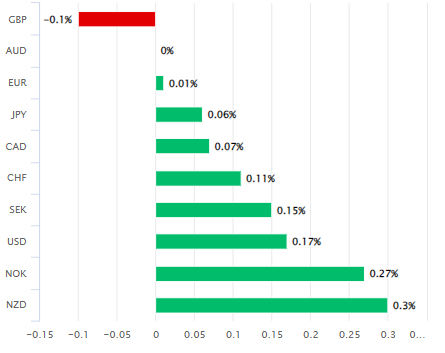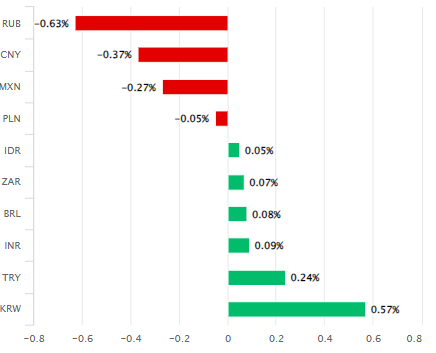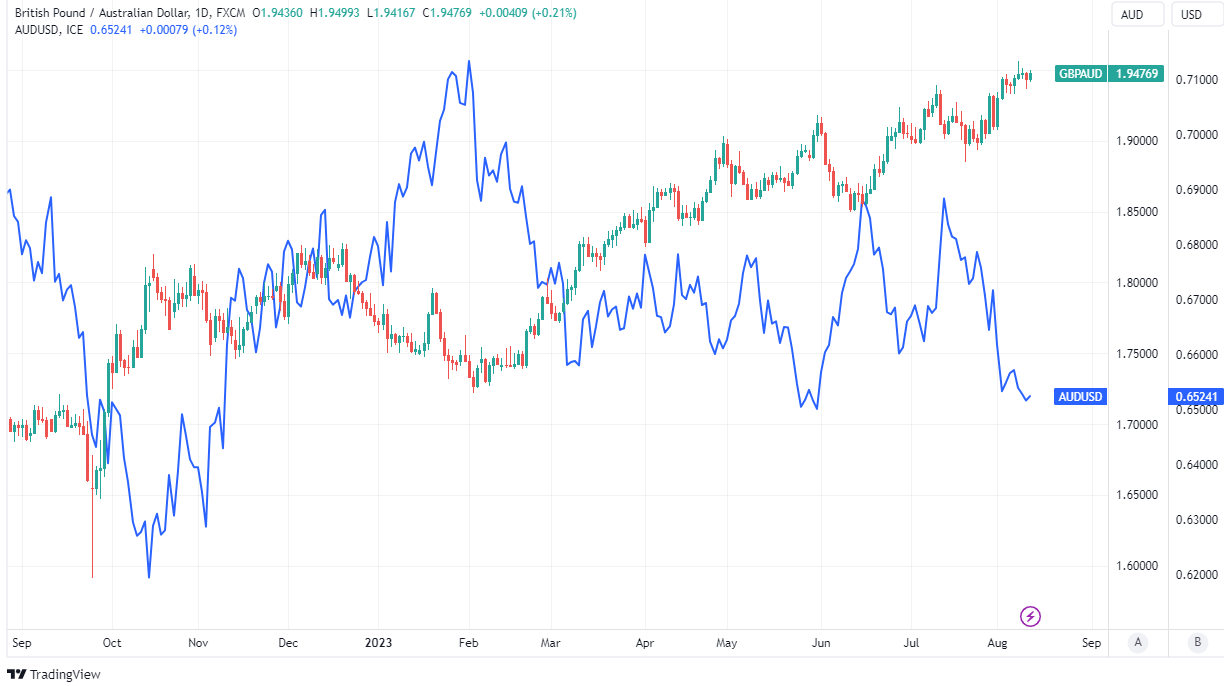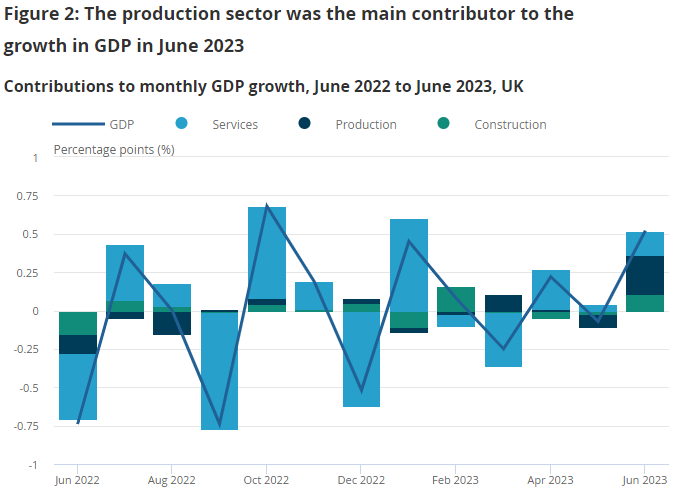Australian Dollar Recovers Losses after RBA Hints Rate Cycle Near End
“While there are still clear risks, particularly around the tight labour market, these are unlikely to form a strong enough case for the RBA to tighten further in coming months” - Westpac.
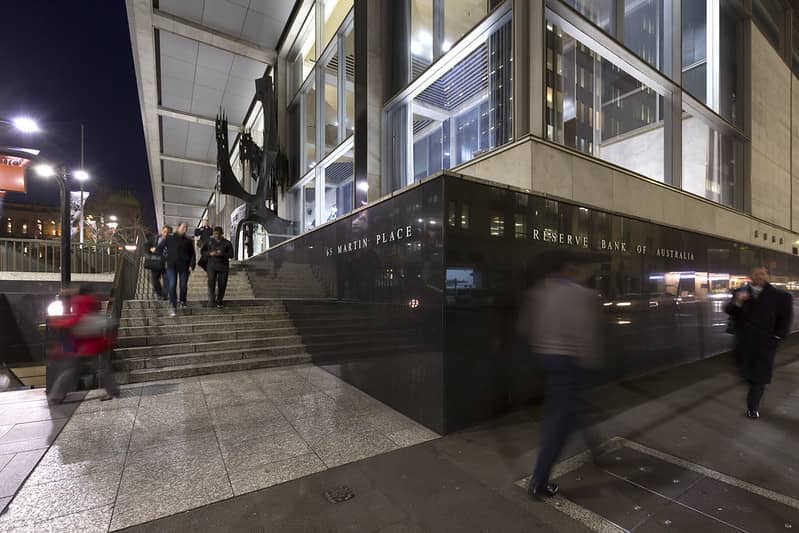
Image © RBA.
The Australian Dollar pared earlier losses against most counterparts in the final session of the week after Reserve Bank of Australia (RBA) Governor Philip Lowe gave a cautiously upbeat assessment of the economic outlook and reportedly indicated that interest rates might already have risen as far as they’re likely to.
Australia’s Dollar was bought widely early in European trading on Friday with the antipodean currency up against all major counterparts except for the Pound after Governor Lowe told a House of Representatives Standing Committee the Australian economy remains on a “narrow path” to what many might refer to as a ‘soft landing.’
“Looking forward, it is possible that some further tightening of monetary policy will be required to ensure that inflation returns to target within a reasonable timeframe. Whether or not this is the case will depend upon the data and the Board’s evolving assessment of the outlook and risks,” he said in opening remarks.
“The data are also consistent with the Australian economy continuing to travel along that narrow path that I have spoken about for some time – that path is one that leads to inflation coming down within a reasonable timeframe and the unemployment rate remaining below the levels of the past 40 years,” he said in a hearing,” he added.
The governor didn't rule out further increasing the cash rate after it was left unchanged at 4.1% in August but acknowledged that it is already at an economically “restrictive” level and was reported to have said in later remarks that raising it further in an attempt to reduce inflation faster would not be "in the national interest."
Above: Australian Dollar relative to G10 and G20 currencies on Friday. Source: Pound Sterling Live.
Australia's cash rate now sits at its highest level since 2012 while its increase from 0.1% during the pandemic was cited on Friday for the RBA's expectation that “below trend” economic growth would persist alongside a downturn in consumer spending that has “slowed considerably” in recent times.
Economic growth was projected to pick up over the coming years, however, with incomes rising in response to falling inflation while business investment in productive capacity and residential housing were also envisaged as notable contributors to economic growth.
“While there are still clear risks, particularly around the tight labour market, these are unlikely to form a strong enough case for the RBA to tighten further in coming months, particularly with inflation continuing to ease and growth outcomes confirming a sharp economic slowdown,” says Matthew Hassan, an economist at Westpac.
“The RBA’s recent commentary has shown increased confidence in achieving a reasonably timely return to low inflation and that it is also comfortable with inflation ‘only’ returning to the 2-3% range by late 2025 rather than being more intent on hitting the mid-point of that range,” he adds in a Friday economics commentary.
Above: Pound to Australian Dollar rate shown at daily intervals alongside AUD/USD.
Westpac economists say the RBA tightening cycle is now likely already over and that this is likely to be made clear by economic figures out in the weeks and months ahead, though it’s less clear what this would mean for the Australian Dollar, given how far it’s fallen over the last month and year-to-date.
The Australian Dollar fell against all G20 currencies except the New Zealand Dollar for the month to Friday and was carrying losses in relation to most counterparts for the yea
“We are not expecting any further interest rate increases from the RBA but note that the risk lies towards one more 25bp increase in the near term. Financial markets are pricing about a 50% chance of another hike over the coming months," says Kristina Clifton, a senior economist and currency strategist at Commonwealth Bank of Australia.
"AUD/USD is likely to be driven by the USD and any further news on the Chinese economy into the weekend. It will not take much to push AUD/USD down to its recent low of 0.6458,” she adds in Friday market commentary.
Australian Dollars were bought widely on Friday though it lagged behind the Pound, which rose further against all major counterparts after the Office for National Statistics (ONS) said the economy had grown 0.5% in June and 0.2% over the second quarter with both numbers higher than the economist consensus.
Source: Office for National Statistics.
“A range of businesses cited the additional bank holiday in May as a reason for increased output in June 2023 compared with May 2023,” the ONS said in its announcement.
“Monthly GDP grew by 0.9% in June 2023 compared with the same month last year. For comparison, monthly GDP fell by 0.3% between May 2022 and May 2023. The Platinum Jubilee in 2022, and the movement of the May bank holiday, led to an additional working day in May 2022 and two fewer working days in June 2022,” it added.
Statistical ‘base effects’ connected with public holidays this year and last were the largest driver of the uplift, which took total ‘real GDP’ back above its pre-pandemic level while lifting Sterling and driving a sell-off in the government bond market as many contemplated the implications for Bank of England (BoE) interest rate policy.
The BoE raised Bank Rate to 5.25% last week and announced forecasts based on the assumption that it would rise significantly further than assumed in the May monetary policy report while also projecting it would take even longer for inflation to fall back to the 2% target than in the prior forecast set.
“Inflation is now on the way back down, albeit slower than most would like, and the economy is beginning to teeter. The Bank of England now needs to ask itself if more rate increases are really necessary,” says Marcus Brookes, chief investment officer at Quilter Investors, in response to Friday’s economic numbers.
